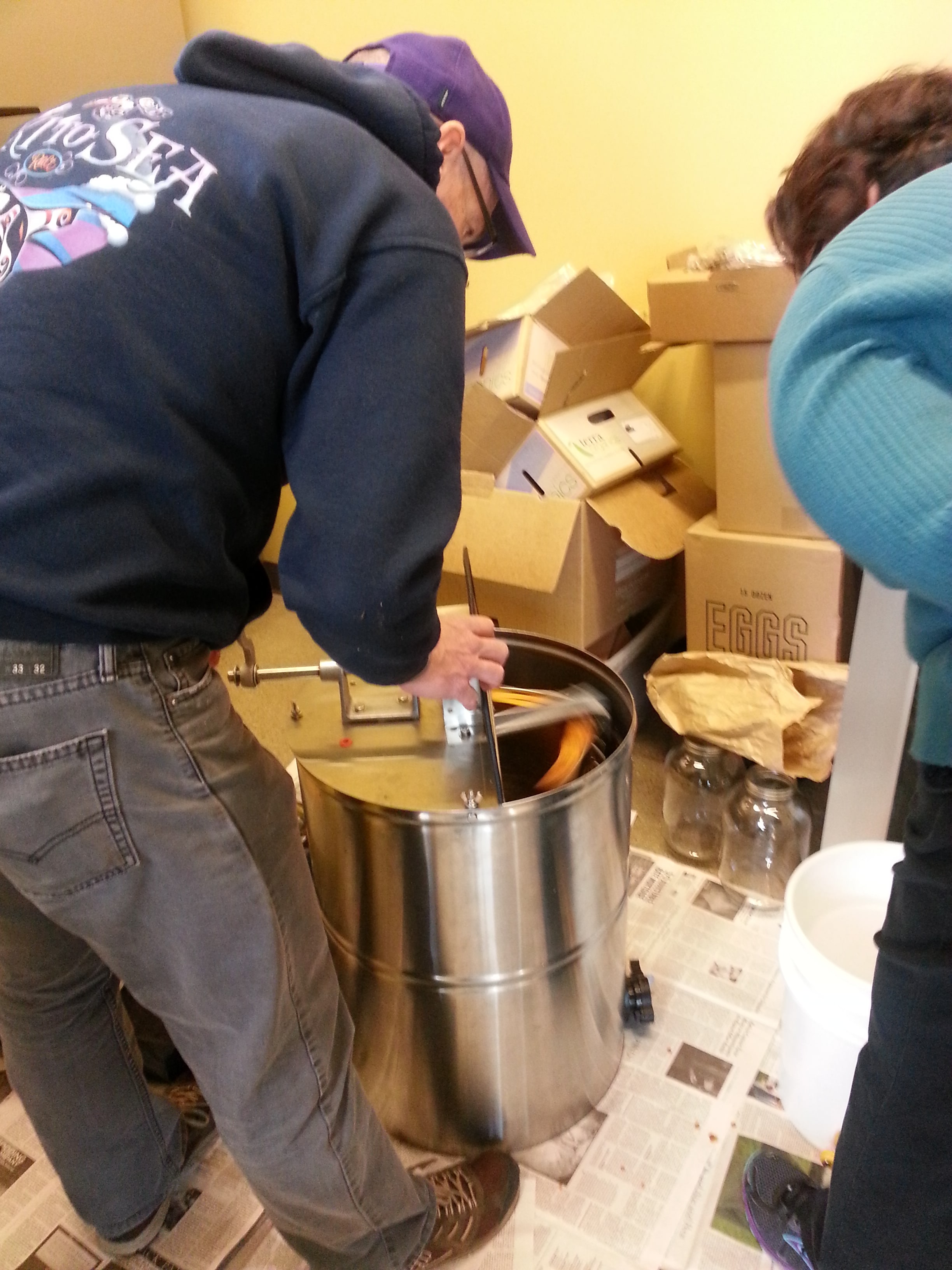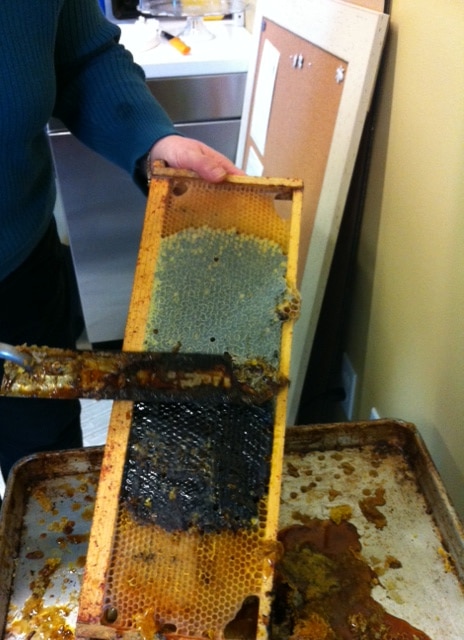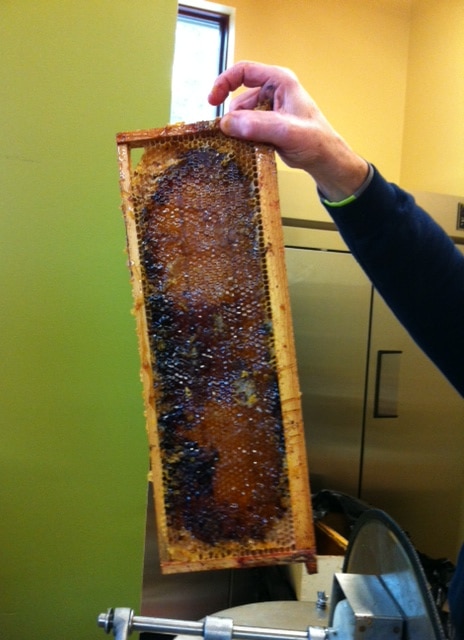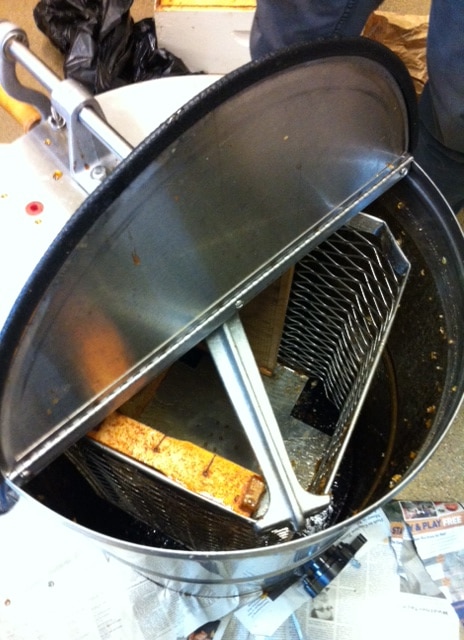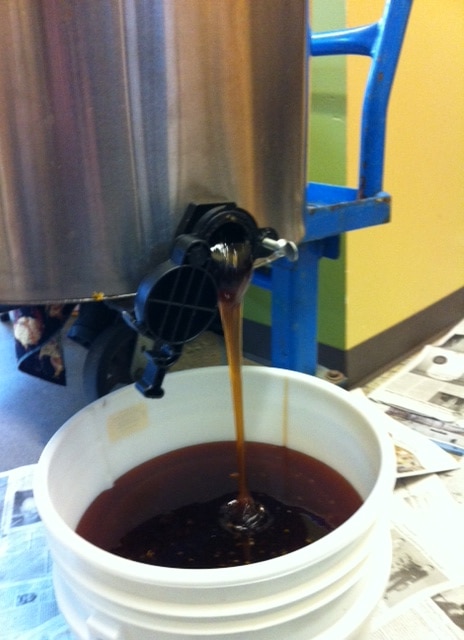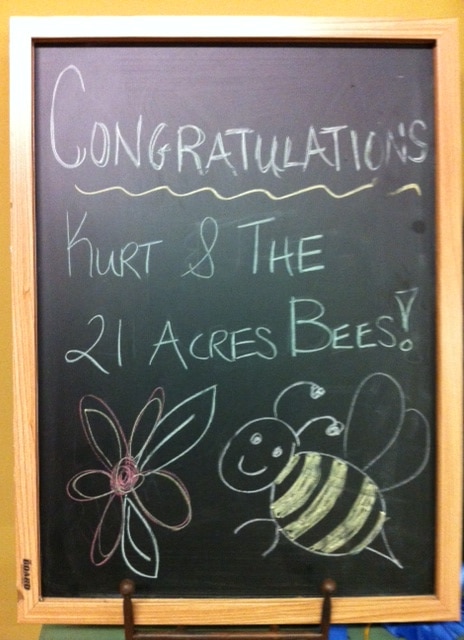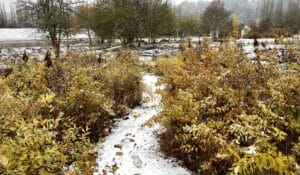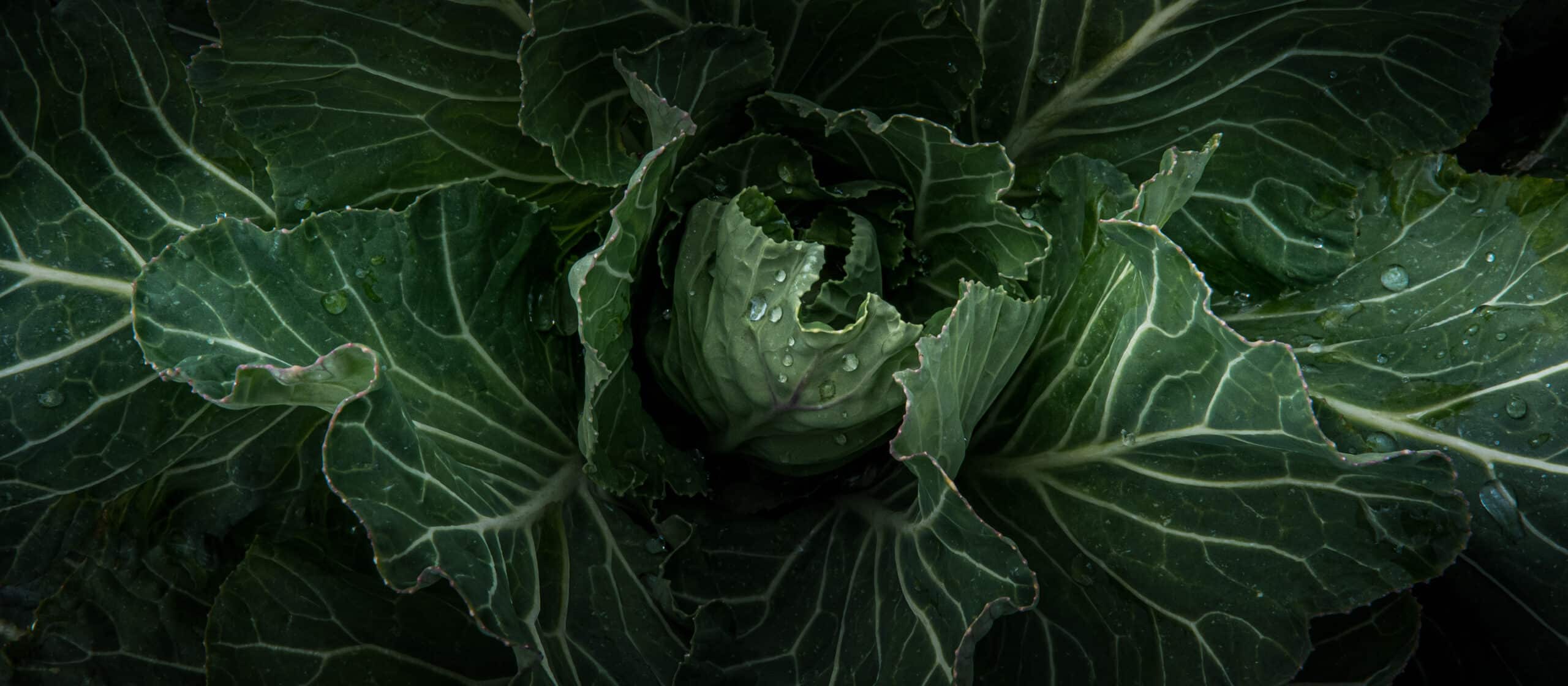
Fall Honey Harvest at 21 Acres
Fall Honey Harvest at 21 Acres
- posted on: January 26, 2014
- posted by: 21 Acres
"*" indicates required fields

The scent of melting wax and fragrant sweetness in our Farm Market last Friday announced the special arrival of fall honey from our beehives at 21 Acres to anyone who walked through the front door. Our beekeeper (and Principal Education Advisor) Kurt Sahl brought frames of honeycomb with beeswax and beautiful dark raw honey from the farm into the building where it could be separated and the honey extracted. As a regular volunteer at 21 Acres, I agreed to pitch in and roll up my sleeves to help: Some work definitely needed to be accomplished before the honey was ready for consumption.
The honey extraction begins with heating a trowel-like device to melt and scrape the beeswax that blocks each little cell of the honeycomb frame. When both sides of the frame are cleared of the wax, the honey can flow freely. The frames are then loaded into a cylindrical drum which extracts the honey by the use of centrifugal force. The energy powering the honey extractor is good old-fashioned hand-cranking.
As Kurt cranked, he shared his expertise, “Our winter honey is a darker color because of the plants blooming in the fall which tend to be mostly Japanese knot weed. The lighter honey in the summer is from bees predominately collecting blackberry blossom nectar.”
In some of the frames we could see where the cells changed from the lighter honey to the darker creating an arch shape, an illustration of the bees sourcing different nectar.
After the honey was spun from the frames, it was strained through a fine mesh sieve into a container ready for bottling. As we filled the glass jars, we thought about the many miles the bees had to toil to produce this amber sweetness.
Our question was answered on the Canadian Honey Council’s website: They report that a honeybee travels the equivalent number miles as what it would take to travel around the world twice just to make one pound of honey.
The fact that it is so labor intensive for the bees to create honey should make it special in its own right, but now studies have shown that eating local raw honey two months before allergy season can minimize allergy symptoms in certain people. Honey is also purported to increase athletic performance, aid in restful sleep and because of its antibacterial properties- can also be used topically for minor abrasions. One of our staff members here at 21 Acres used honey on one of her horses to heal cuts and sores from when he got caught in a difficult spot — Apparently it worked beautifully.
Our 21 Acres fall honey yield was nearly 3 gallons. Like all special harvests, there is a limited amount available for sale. When you do visit the Farm Market you can see how we used the wax melted from the honeycomb – we shared it with our sister farm, Cherry Valley Dairy to encase their delicious cheeses which are sold in our dairy case. Yum!
– Rose Marie










 back to blog overview
back to blog overview

